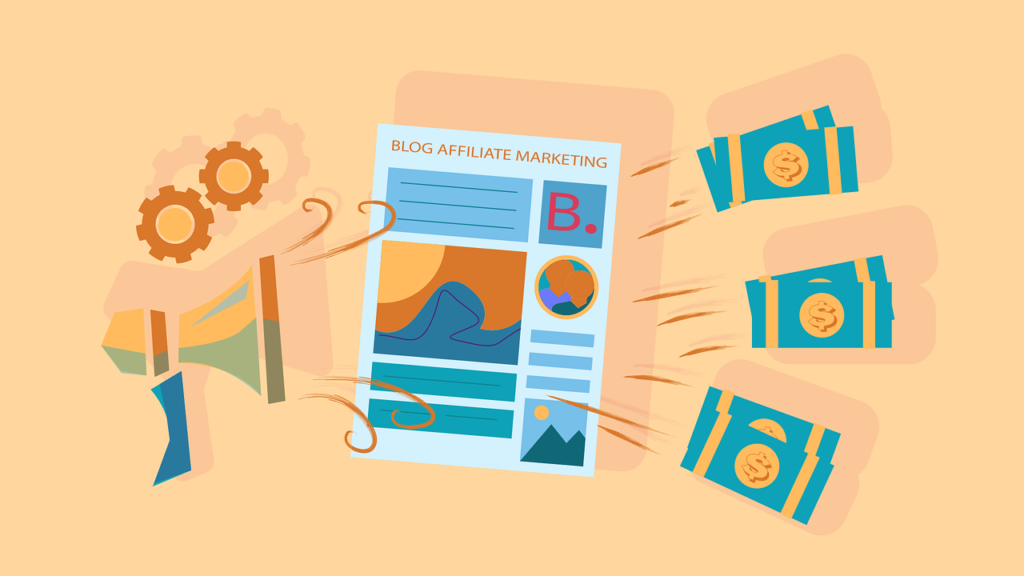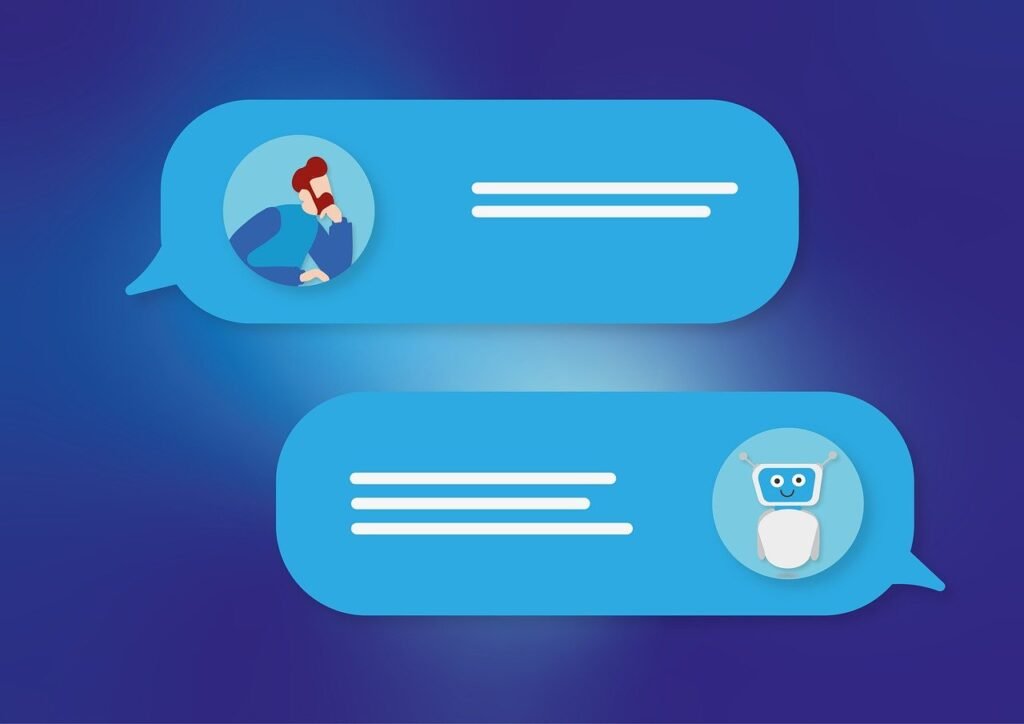Have you ever opened an email that greeted you by your first name, only to find the rest of the message completely irrelevant? That’s the problem with surface-level personalization—it’s not enough anymore. In today’s fast-paced digital world, customers expect marketing to feel like a conversation tailored specifically to them. They want to feel understood, not just noticed. Personalization has become a non-negotiable for B2C brands aiming to build trust, drive engagement, and boost sales.
What Personalization Really Means in 2024

In 2024, personalization in B2C marketing is about delivering experiences so tailored that they feel intuitive and seamless to the customer. It goes far beyond addressing someone by their first name in an email or sending a generic birthday discount. Instead, personalization today is about leveraging real-time data, understanding context, and predicting needs to create marketing that feels less like advertising and more like a genuine conversation.
The foundation of modern personalization is understanding the customer’s intent in the moment. Intent-driven personalization requires analyzing behaviors like search queries, browsing history, and engagement patterns in real-time.
For example, if a customer searches for travel destinations on your website, a tailored follow-up email could suggest flight deals or highlight top-rated hotels in the areas they explored. This level of relevance makes your messaging not only timely but also highly actionable.
Another evolution in personalization is its ability to adapt dynamically based on changing customer behavior. In 2024, personalization isn’t static; it evolves as the customer interacts with your brand. For example, a customer browsing workout gear in the morning might receive an email later in the day featuring the top-rated running shoes on your site.
If they interact with the email but don’t purchase, a retargeting ad the next day could highlight accessories like water bottles or compression socks. This creates a personalized funnel that feels organic and helpful, guiding the customer closer to conversion without overwhelming them.
Cross-channel personalization is another game-changing trend. Customers don’t engage with your brand in a vacuum—they move fluidly across platforms like your website, app, social media, and email. Personalization in 2024 means ensuring these channels are connected so that the experience feels consistent wherever the customer interacts with your brand.
For example, if a customer adds a product to their cart on your website but doesn’t complete the purchase, a follow-up notification on your app or a retargeting ad on Instagram can nudge them to return. The key is making these touchpoints work together seamlessly.
One of the most advanced forms of personalization today is predictive personalization powered by AI. Predictive models use historical data to anticipate what a customer is likely to need or want next. This might involve recommending products based on previous purchases or suggesting content aligned with their browsing habits.
For instance, a customer who frequently buys skincare products might be shown a new launch or a limited-edition bundle before it becomes widely available. Predictive personalization doesn’t just cater to current interests; it helps shape future ones, making your brand feel indispensable.
Personalization in 2024 also embraces context—recognizing that a customer’s needs and preferences might shift depending on factors like location, time of day, or even the weather.
A coffee shop app might send a push notification offering hot drinks during a chilly morning commute, while an e-commerce brand might promote summer apparel during a heatwave. This contextual awareness shows that your brand understands not just the customer but the environment they’re navigating, making your messages more relevant and engaging.
For startup founders, the real challenge is balancing the sophistication of these personalization strategies with authenticity. Personalization should enhance the customer experience, not feel intrusive or mechanical. Building trust is crucial, so transparency is key.
Let customers know how their data is being used and always offer value in return. For instance, if you’re using purchase history to suggest related products, frame it as a helpful recommendation rather than a sales tactic.
Why Personalization Matters More Than Ever

In today’s fast-paced digital landscape, personalization has become a critical factor in determining whether a customer chooses to engage with a brand or simply scroll past it. For B2C brands, especially startups navigating competitive markets, personalization is not just an added bonus—it’s a fundamental expectation.
Customers are bombarded with messages from countless brands daily, and generic marketing no longer stands a chance. What sets a brand apart now is its ability to make customers feel seen, understood, and valued.
Personalization matters because it directly influences how customers perceive your brand. When your messaging reflects their preferences, behaviors, and needs, it signals that your brand is paying attention.
For example, a customer who frequently buys vegan products will likely feel more connected to a grocery delivery service that recommends plant-based recipes or highlights new vegan offerings. This level of care builds trust, which is essential for startups working to establish credibility in a crowded space.
Personalization also significantly impacts customer retention. Acquiring new customers is far more expensive than retaining existing ones, and personalization helps keep customers coming back. When customers see that a brand consistently delivers relevant content or products, they’re more likely to stick with that brand over time.
For instance, a clothing brand that recommends outfits based on a customer’s past purchases creates a sense of convenience and thoughtfulness that builds loyalty. Over time, these small but meaningful interactions compound into a strong, lasting relationship.
For startups, one of the most strategic reasons personalization matters is its ability to drive higher return on investment (ROI). Personalized marketing campaigns tend to be more efficient because they target the right audience with the right message. Instead of casting a wide net, you’re focusing your resources on those most likely to engage and convert.
For example, an email campaign segmented by behavior—such as cart abandoners or frequent buyers—will yield far better results than a one-size-fits-all approach. Every dollar spent on personalized campaigns works harder, which is critical when budgets are tight.
Personalization also addresses a key psychological factor: the human desire for relevance. Customers want to feel that the brands they engage with understand their unique preferences and values.
This is especially important in industries where emotional connections drive purchasing decisions, such as fashion, beauty, and wellness. A wellness brand, for instance, that tailors its marketing to a customer’s fitness goals or dietary preferences isn’t just selling a product—it’s positioning itself as a trusted partner in the customer’s personal journey.
In 2024, privacy concerns have also heightened the importance of personalization done right. Customers are more aware than ever of how their data is being used, and they expect a fair exchange of value in return. This means personalization must go beyond surface-level gestures and offer tangible benefits, like saving time, enhancing convenience, or providing genuinely helpful recommendations.
A travel startup, for example, could use customer data to send tailored travel packages based on past bookings, showcasing trips that match a customer’s preferences without feeling intrusive. The transparency and usefulness of this approach make customers more willing to share their data and engage with your brand.
Another reason personalization matters is its ability to create competitive differentiation. In many industries, products and services are increasingly commoditized, with little to distinguish one brand from another. Personalization becomes the differentiator.
It’s not just about the product itself but how that product is presented and the experience surrounding it. For example, two brands might sell similar skincare products, but the one that offers a personalized skincare routine based on a customer’s skin type and concerns will likely win their loyalty.
For startup founders, personalization also provides an opportunity to scale smarter. Instead of focusing solely on acquiring more customers, personalization allows you to deepen engagement with your existing audience.
By understanding what motivates your customers and tailoring your messaging accordingly, you can encourage higher lifetime value without significantly increasing your marketing spend. A subscription box service, for instance, could use personalization to suggest add-ons or upgrades that align with a customer’s preferences, boosting revenue while enhancing the customer experience.
The rise of AI and automation tools has made advanced personalization more accessible than ever, even for startups with limited resources. These technologies allow you to analyze customer data at scale, identify patterns, and implement personalized campaigns with ease.
For example, a small e-commerce brand can now use AI to recommend products based on browsing behavior or send automated emails triggered by specific actions, like a customer viewing a product but not purchasing. This level of sophistication was once reserved for large enterprises but is now within reach for businesses of all sizes.
The Building Blocks of Advanced Personalization

Advanced personalization in B2C marketing relies on a strong foundation built from data, insights, and the right tools. For startup founders, mastering these building blocks is essential for creating marketing campaigns that not only capture attention but also convert casual browsers into loyal customers.
The key to advanced personalization lies in understanding your audience at a granular level and delivering experiences that feel like they were designed for each individual.
The first and most critical building block is comprehensive data collection. To personalize effectively, you need to gather detailed information about your customers. This includes explicit data, such as demographics and stated preferences, and implicit data, like browsing habits, purchase history, and engagement patterns.
The more comprehensive your data, the clearer the picture of your customer’s needs and desires. A beauty startup, for example, can use data about a customer’s past purchases, like skincare products for oily skin, to recommend complementary products such as mattifying primers or oil-control face masks.
Integrating real-time data into your personalization strategy elevates it to the next level. Customers’ needs and behaviors can change rapidly, and relying solely on historical data may lead to missed opportunities. Real-time personalization allows you to respond to actions as they happen.
For instance, if a customer is actively browsing hiking gear on your website, a well-timed pop-up offering a discount on related accessories, such as backpacks or water bottles, can push them toward making a purchase. Real-time tools also allow you to adjust your messaging dynamically based on current trends, inventory levels, or customer actions.
Segmentation remains a cornerstone of personalization, but advanced strategies take segmentation far beyond basic categories. Instead of grouping customers by age or location, consider behavioral and psychographic factors. Segment customers by their motivations, such as convenience seekers, deal hunters, or enthusiasts who love discovering new products.
For instance, a food delivery service could tailor its messaging to emphasize speed and reliability for time-strapped professionals while focusing on variety and exploration for foodies who enjoy trying new cuisines. By understanding what drives each segment, you can craft campaigns that feel deeply relevant.
Dynamic content is another essential building block for advanced personalization. This approach involves creating flexible content that adapts based on who is viewing it.
A clothing retailer, for example, might show a homepage banner promoting winter coats to customers in colder regions while highlighting lightweight jackets for those in warmer climates. Dynamic email content can also ensure that product recommendations align with each recipient’s browsing and purchase history, enhancing the likelihood of engagement.
Predictive analytics plays a crucial role in personalizing future interactions. By analyzing patterns in customer behavior, predictive tools can anticipate what a customer is likely to need or want next.
For instance, a subscription box service might identify that customers who order fitness gear every few months are likely to need workout supplements or activewear next. By proactively presenting these recommendations, you position your brand as both helpful and intuitive, increasing the chances of repeat purchases.
Advanced personalization also depends on seamless integration across channels. Customers interact with your brand in various ways—through your website, social media, email, and even offline experiences. Ensuring that these touchpoints work together cohesively is vital for delivering a consistent and personalized experience.
If a customer adds items to their cart on your website but doesn’t complete the purchase, they could receive a follow-up email with the items in their cart and a tailored incentive. Meanwhile, they might also see retargeting ads on social media showcasing the same products. This coordinated effort ensures that the personalization feels natural and reinforces the customer’s journey toward conversion.
For startup founders, automation is a game-changer when it comes to implementing advanced personalization at scale. Tools like customer relationship management (CRM) systems, email marketing platforms, and AI-driven analytics allow you to personalize interactions without requiring manual effort for every customer.
Automation ensures that every customer receives a tailored experience while freeing up your team to focus on strategy and innovation. For instance, an automated workflow could send a welcome email series to new customers, followed by product recommendations based on their browsing history, all without requiring hands-on management.
Another building block of advanced personalization is context. Personalization becomes far more impactful when it accounts for the customer’s situation, such as the time of day, location, or even weather.
A coffee shop app might send a push notification offering a free drink upgrade during a rainy morning commute, making the message feel timely and relevant. Similarly, an e-commerce brand might emphasize same-day delivery options for customers shopping during the holiday season, addressing their immediate need for convenience.
Finally, advanced personalization requires a feedback loop. Collecting and analyzing customer feedback helps you refine your personalization efforts over time. For example, if a segment of customers consistently responds well to certain types of offers or messaging, you can double down on those strategies.
Conversely, if a personalization attempt falls flat, use that data to identify areas for improvement. Regularly iterating based on what works and what doesn’t ensures that your personalization efforts stay effective and aligned with customer expectations.
Turning Data Into Actionable Insights for Personalization

Data is the fuel that powers effective personalization, but its real value lies in how you use it. For startup founders, turning raw data into actionable insights can be a game-changer, allowing you to create hyper-targeted marketing that feels relevant and meaningful to your customers.
The challenge is not in collecting data—modern tools make that relatively straightforward—but in identifying the patterns, behaviors, and opportunities hidden within it. This is where strategy meets creativity, transforming numbers into experiences that drive engagement and sales.
The first step in making your data actionable is identifying the key metrics that align with your business goals. For instance, if your primary objective is to increase conversions, focus on behaviors that signal purchase intent, such as frequent visits to product pages, adding items to a cart, or clicking on pricing details.
These actions reveal what customers are interested in and how close they are to making a decision. By targeting these high-intent users with tailored campaigns, such as personalized discounts or limited-time offers, you can remove barriers and nudge them toward completing the purchase.
Segmentation is a critical tool for interpreting data and making it actionable. By dividing your audience into smaller, behavior-driven groups, you can create marketing that feels personal while still being scalable. For example, a fitness startup might identify three core segments: customers who browse yoga gear, those who shop for strength-training equipment, and those who focus on cardio.
Each segment has different motivations and needs, which you can address with targeted messaging. Yoga enthusiasts might appreciate content about mindfulness and flexibility, while strength trainers might respond better to tips for building muscle or product bundles featuring weights and protein supplements.
Contextual data adds another layer of depth to your insights, helping you understand not just what your customers are doing but why. For instance, a surge in searches for outdoor gear might reflect seasonal trends, like the start of hiking season, or a temporary spike in interest following a popular outdoor documentary.
Using this context, you can create campaigns that feel timely and relevant, such as promoting hiking gear in spring or tying your messaging to a trending cultural moment.
Real-time data is particularly powerful for delivering actionable insights, as it captures customer behaviors as they happen. A customer who lingers on a product page but doesn’t add the item to their cart might benefit from a chatbot offering assistance or a personalized email shortly after with additional details or reviews.
This immediacy ensures your marketing stays relevant and maximizes the chances of conversion. For startups, tools like dynamic remarketing ads or automated workflows can make it easier to act on real-time signals without overwhelming your team.
Predictive analytics takes data-driven personalization to the next level by helping you anticipate customer needs before they even express them. By analyzing patterns in past behaviors, predictive tools can suggest what a customer is likely to want next.
For example, a beauty brand might identify that customers who purchase moisturizers are often interested in serums within a month. Acting on this insight, you could create a campaign that promotes serums to moisturizer buyers, complete with education on how the products work together. This proactive approach not only boosts sales but also positions your brand as a helpful resource.
Feedback loops are essential for refining your approach to actionable data. Every campaign you run generates new data about what works and what doesn’t. Use this information to tweak your personalization strategy.
For instance, if a segment of customers consistently responds to free shipping offers but not to percentage discounts, you can adjust your future campaigns to highlight what resonates. This iterative process ensures that your personalization efforts stay effective and aligned with customer preferences.
Integrating cross-channel data is another critical component of turning insights into action. Customers don’t interact with your brand in isolation; they move between your website, app, social media, and emails. Analyzing data across these channels can reveal valuable insights about their journey.
For example, a customer who views a product on your Instagram shop but doesn’t click through might respond better to a follow-up ad on Facebook or an email featuring that product. Coordinating your efforts across platforms ensures that your marketing feels cohesive and reinforces your message.
For startup founders, prioritizing actionable insights means focusing on simplicity and clarity. While advanced tools and analytics platforms are invaluable, your ultimate goal is to create a clear picture of your customer’s needs and behaviors that informs every decision you make.
Start small by identifying one or two key behaviors that drive the most value for your business, such as repeat purchases or email engagement, and build your personalization strategy around those insights.
Beyond Digital
Bringing Personalization Into Real Life

Personalization in B2C marketing doesn’t have to stop at the digital realm. In fact, bridging the gap between online and offline experiences is where brands can create truly memorable interactions. For startup founders, this strategy can set your brand apart by delivering moments that feel personal and authentic in the real world, reinforcing the connection customers have with your brand and driving deeper loyalty.
One powerful way to bring personalization into real life is through the use of purchase history and customer preferences to enhance in-store experiences. Imagine a customer walking into your boutique and being greeted by a sales associate who knows their style preferences because they shopped on your website.
The associate might suggest items similar to those they browsed online or offer exclusive recommendations based on past purchases. This level of personalization not only improves the shopping experience but also makes customers feel valued and understood.
Loyalty programs are another effective tool for offline personalization. By integrating your loyalty system with customer data, you can offer tailored perks and experiences that extend beyond discounts.
For example, a coffee shop could surprise a loyal customer with their favorite drink on their birthday or offer a free upgrade for hitting a rewards milestone. These small gestures build emotional connections and make customers feel like more than just a transaction.
Events provide another opportunity to personalize offline interactions. Hosting VIP shopping events for your top customers or exclusive previews for your new product line can make your audience feel special. At these events, use the data you’ve collected to create a tailored experience.
If you’re a wine retailer, for instance, you could invite customers who’ve previously purchased red wines to a curated red wine tasting. This not only deepens their engagement with your brand but also positions your business as attentive and thoughtful.
Technology plays a crucial role in enabling real-life personalization. Geofencing, for example, allows you to target customers when they are near your physical store or even a competitor’s.
A bookstore could use geofencing to send a personalized push notification offering a discount on books the customer browsed online when they walk past the store. This immediate connection between digital behavior and real-world action creates a seamless customer journey.
Augmented reality (AR) is another innovative way to bring personalization offline. AR tools can allow customers to visualize products in their space or try them on virtually in-store.
A furniture retailer could offer an AR experience where customers see how a specific couch fits in their living room, while a makeup brand could provide AR mirrors that let customers test different products in-store based on their skin tone or preferences from their online profile. These experiences merge technology and personalization to create a memorable, value-added experience.
Subscription boxes are a perfect example of blending online data with real-life personalization. Brands that collect data on customer preferences can use it to curate highly tailored boxes that delight customers when they arrive.
For example, a wellness startup might send a personalized care package with products aligned to a customer’s stated goals, like relaxation or fitness. Including a handwritten note explaining why each product was chosen further enhances the personal touch.
Another strategic avenue is post-purchase personalization that extends into the customer’s daily life. If a customer buys a grill, follow up with personalized grilling tips or a free guide to recipes that match their tastes. For a fitness startup, selling a yoga mat could be followed by a printed schedule of local yoga classes tailored to the customer’s area, enhancing their connection to the product and your brand.
Pop-up stores offer an innovative way to take personalization on the road. These temporary retail locations can be designed to reflect the preferences of specific customer segments in targeted areas.
For instance, if you’re a clothing brand and data shows that your customers in a particular city love bold, colorful designs, your pop-up can showcase a curated selection of those styles. Personalization at this level creates a buzz and draws in loyal customers while introducing your brand to new audiences in a way that feels tailored.
Personalization in real life isn’t limited to high-tech solutions; sometimes, the simplest gestures are the most impactful. A bakery could remember a customer’s favorite pastry and set one aside for them during their regular visits.
A gym might send handwritten thank-you notes to members who’ve hit significant milestones. These gestures may not be scalable but can have an outsized impact on customer loyalty, especially for startups that thrive on personal connections.

Conclusion
Personalization in B2C marketing has evolved far beyond simply adding a first name to an email. It’s now about creating meaningful, seamless experiences that show your customers they are understood and valued at every step of their journey.
For startups and growing brands, this level of connection isn’t just a competitive advantage—it’s a necessity in a world where consumers have endless choices and fleeting attention spans.





















